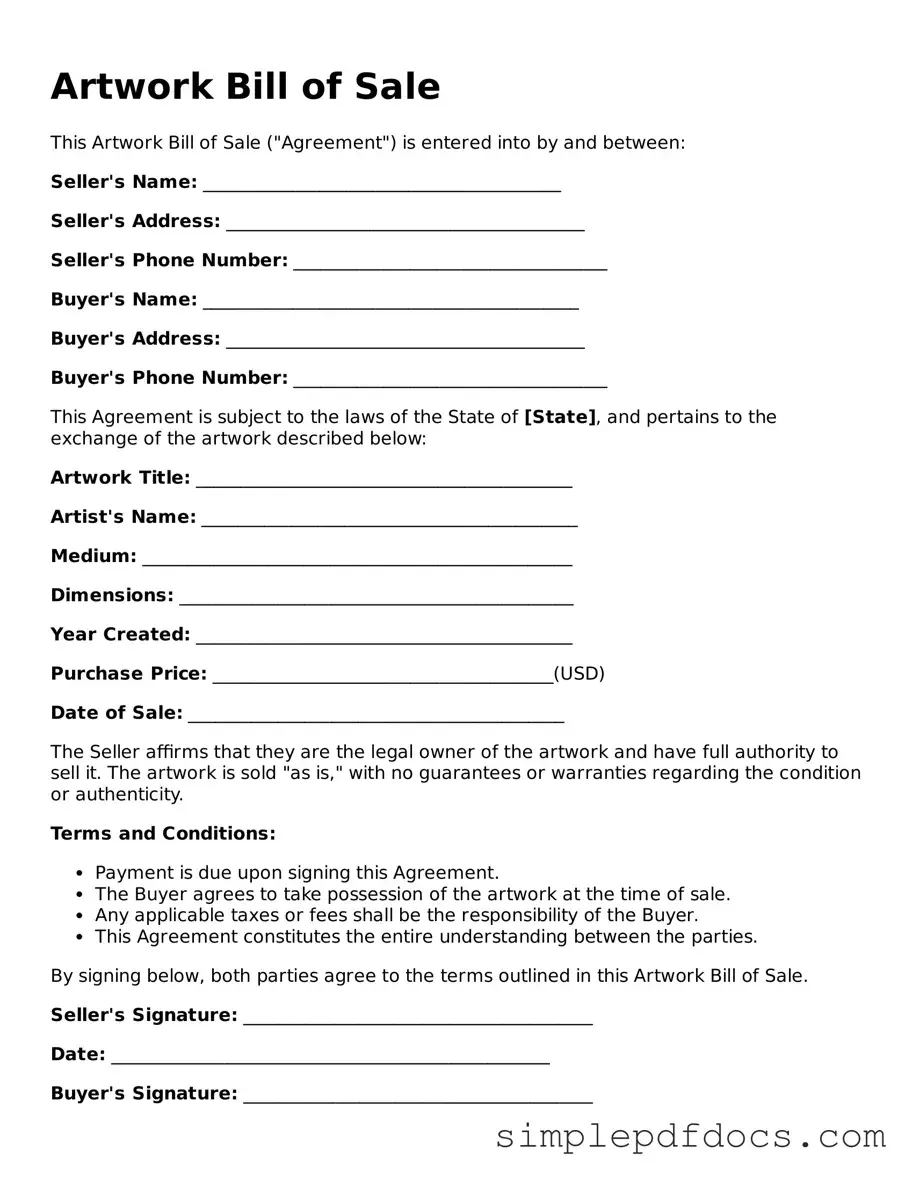Attorney-Approved Artwork Bill of Sale Form
An Artwork Bill of Sale form is a legal document that facilitates the transfer of ownership of artwork from one party to another. This form outlines essential details such as the description of the artwork, the sale price, and the signatures of both the buyer and seller. Utilizing this document ensures that both parties have a clear understanding of the transaction and protects their rights in the sale process.
Get Document Here
